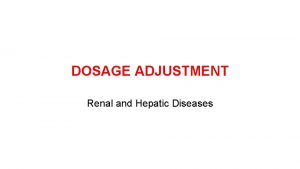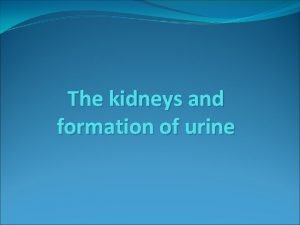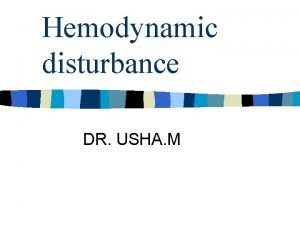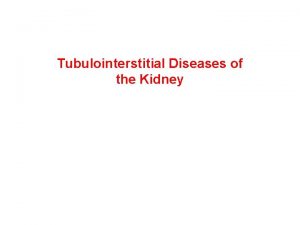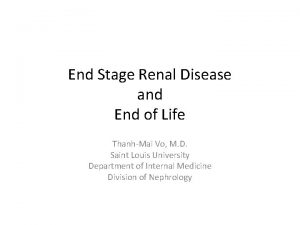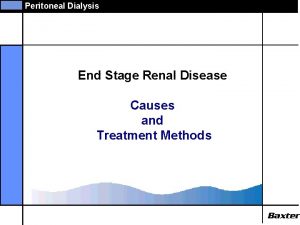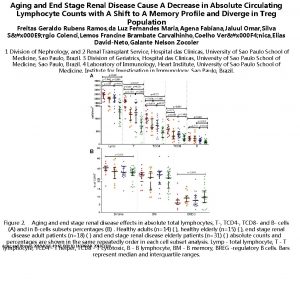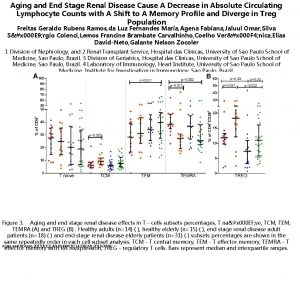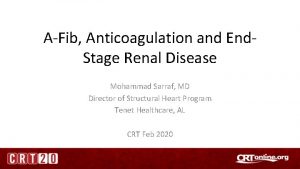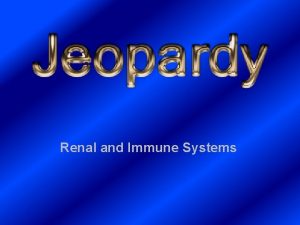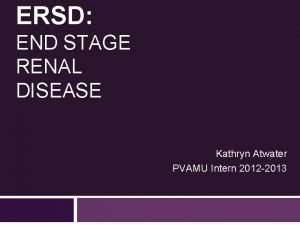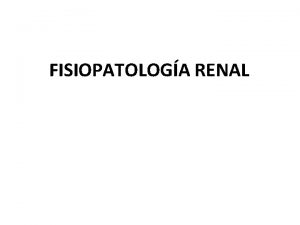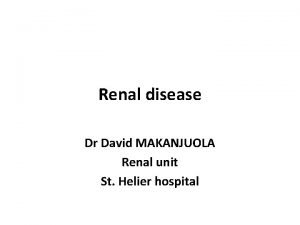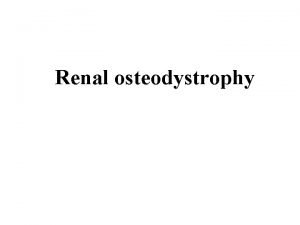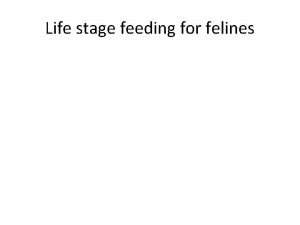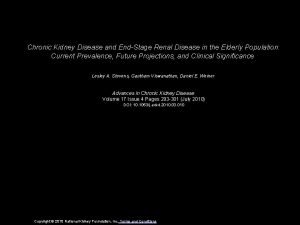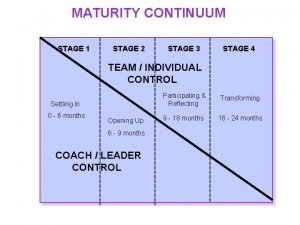End Stage Renal Disease and End of Life

























- Slides: 25

End Stage Renal Disease and End of Life Thanh-Mai Vo, M. D. Saint Louis University Department of Internal Medicine Division of Nephrology

Objectives • • • Incidence and prevalence of ESRD Prognosis of patients with ESRD Understanding ESRD, the patient’s perspective Shared Decision-Making How to manage patients with ESRD who decide to forego dialysis

Kidney Disease Statistics for the United States • The number of incident (newly reported) ESRD cases in 2014 was 120, 688 • The number of ESRD prevalent cases continues to rise by about 21, 000 cases per year https: //www. niddk. nih. gov/health-information/health-statistics/kidney-disease

Table 1. 1 Trends in annual number of ESRD incident cases, unadjusted and adjusted* incidence rate (per million/year) of ESRD, and annual percent change, in the U. S. population, 1996 -2014 Incident count Unadjusted rate Adjusted rate Year No. cases % Change from previous year Unadjusted rate (per million/year) % Change from previous year Adjusted rate (per million/year) % Change from previous year 1996 77, 018 n/a 278 n/a 328 n/a 1997 82, 116 6. 6 293 5. 3 343 4. 4 1998 87, 353 6. 4 308 5. 3 360 4. 8 1999 91, 431 4. 7 319 3. 4 368 2. 4 2000 94, 662 3. 5 327 2. 5 374 1. 5 2001 98, 005 3. 5 336 2. 6 380 1. 8 2002 100, 233 2. 3 340 1. 3 381 0. 1 2003 102, 770 2. 5 345 1. 5 382 0. 3 2004 104, 560 1. 7 349 1. 2 382 -0. 1 2005 106, 662 2. 0 353 1. 2 382 0. 0 2006 110, 342 3. 5 362 2. 5 387 1. 4 2007 110, 381 0. 0 359 -0. 9 379 -2. 1 2008 111, 899 1. 4 360 0. 3 375 -1. 0 2009 115, 508 3. 2 369 2. 5 379 1. 1 2010 115, 920 0. 4 367 -0. 6 372 -2. 0 2011 113, 796 -1. 8 358 -2. 5 358 -3. 8 2012 115, 602 1. 6 360 0. 7 355 -0. 8 2013 118, 119 2. 2 366 1. 7 355 0. 2 2014 120, 688 2. 2 370 1. 1 354 -0. 3 Data Source: Reference Tables A. 1, A. 2(2) and special analyses, USRDS ESRD Database. *Adjusted for age, sex, and race. Abbreviations: ESRD, end-stage renal disease; n/a, not applicable. 2016 Annual Data Report, Vol 2, ESRD, Ch 1 4


Prognosis • Is the overall prognosis different between those with CKD stage 5 (who choose not to go on dialysis) vs. those with ESRD on dialysis?

Comparing Functional Ability Holley J L CJASN 2012; 7: 1033 -1038


Life Expectancy of Elderly Patients Murtagh F E; Nephrol Dial Transplant 2007; 22: 1955 -1962

Life Expectancy for Elderly Patients with High Comorbidity Murtagh F E; Nephrol Dial Transplant 2007; 22: 1955 -1962

Understanding ESRD • What does it mean to have ESRD? • What is it like to be on dialysis? • Should dialysis be initiated?

Shared Decision-Making • At minimum the patient and the physician should be involved • The patient’s legal agent should be involved should the patient lacks decision-making capacity • If allowed by the patient, family and friends can be included Galla J J Am Soc Nephrol 2000; 11: 1340 -1342

Withholding or Withdrawing Dialysis • Patients voluntarily chooses not to be initiated on dialysis • Patients who have given oral or written advance directives clearly stating that they would not want to be initiated on dialysis • When legal agents refuse dialysis or request discontinuation of dialysis in a patient who does not have decision-making capacity Galla J J Am Soc Nephrol 2000; 11: 1340 -1342

Special Cases • Withholding or withdrawing dialysis may be considered in special cases – Patients with irreversible, profound neurologic impairment – Patients who have terminal illness from a nonrenal illness Galla J J Am Soc Nephrol 2000; 11: 1340 -1342

Time-Limited Trials • Consider a short period of dialysis if prognosis is uncertain or in those cases where a consensus cannot be reached Galla J J Am Soc Nephrol 2000; 11: 1340 -1342

What happens when dialysis is not initiated? Murtagh F E J Palliat Med 2007; 10: 1266 -76

Pain • Safe to use: acetaminophen, tramadol, methadone, fentanyl, buprenorphine – Fentanyl and buprenorphine can be given as transdermal patch • Caution advised: oxycodone, hydromorphone • Not recommended: morphine, diamorphine, meperidine Russon L Clinical Medicine 2010, Vol 10, No 3: 279 -81

Neuropathic Pain • Safe to use: Amitriptyline can be titrated from low doses (i. e. 10 mg once a day) • Caution advised: Gabapentin and pregabalin – Significant dose adjustments required – Max dose of gabapentin with GFR < 30 ml/min is 300 mg once a day – If GFR < 20 ml/min very small doses are usually sufficient (i. e. 50 mg once a day) Russon L Clinical Medicine 2010, Vol 10, No 3: 279 -81

Nausea • Safe to use: Ondansetron and granisetron • Caution advised: Haloperidol and levomepromazine – Doses need to be adjusted for GFR – Sedative effects are seen in patients with low GFR Russon L Clinical Medicine 2010, Vol 10, No 3: 279 -81

Pruritus • Emollients including hydrourea • Ondansetron • Anti-histamine (may not help) Russon L Clinical Medicine 2010, Vol 10, No 3: 279 -81

Dyspnea • • • Oxygen Fans Positioning Opiates Diuretics Russon L Clinical Medicine 2010, Vol 10, No 3: 279 -81

Anxiety/Agitation • • Pain control Social support Benzodiazepine Haloperidol Russon L Clinical Medicine 2010, Vol 10, No 3: 279 -81

Restless legs • Benzodiazepine Russon L Clinical Medicine 2010, Vol 10, No 3: 279 -81

Muscle cramps • Benzodiazepine Russon L Clinical Medicine 2010, Vol 10, No 3: 279 -81

Take Home Points • The incidence and prevalence of ERSD in the U. S. is high • The prognosis of an elderly ESRD patient with severe co-morbidities is not the same as a young patient with ESRD • There are certain circumstances in which foregoing dialysis is appropriate • Palliative care is appropriate for patients who choose to forego dialysis
 Ira pré renal renal e pós renal
Ira pré renal renal e pós renal Ira pré renal renal e pós renal
Ira pré renal renal e pós renal Cortical and juxtamedullary nephrons difference
Cortical and juxtamedullary nephrons difference Dose adjustment in renal and hepatic disease
Dose adjustment in renal and hepatic disease Uremia pathogenesis
Uremia pathogenesis 4th stage renal failure
4th stage renal failure Bharathi viswanathan
Bharathi viswanathan End to end accounting life cycle tasks
End to end accounting life cycle tasks End-to-end procurement life cycle
End-to-end procurement life cycle Stage 1 cirrhosis
Stage 1 cirrhosis Difference between single and two-stage tendering
Difference between single and two-stage tendering Stage right stage left diagram
Stage right stage left diagram Phase one denial
Phase one denial Upstage vs downstage
Upstage vs downstage Proscenium stage template
Proscenium stage template The word drama comes from
The word drama comes from Medullary rays kidney
Medullary rays kidney Uti symptoms
Uti symptoms Where does secretion occur in the nephron
Where does secretion occur in the nephron Hemodynamic disorders
Hemodynamic disorders Explain compiler construction tools
Explain compiler construction tools Backend phases of compiler
Backend phases of compiler Front end stage
Front end stage Backleak
Backleak Cornelia ruland
Cornelia ruland Cute snow leopard life cycle
Cute snow leopard life cycle



